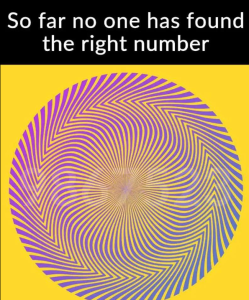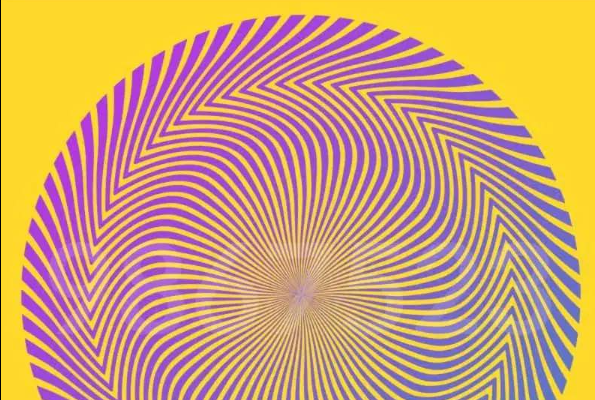Can You Spot the Hidden Number in This Optical Illusion?
Close your eyes for a second, then open them and look again. See anything different? Optical illusions are masters at sneaking information past your conscious mind — shapes, shades, and gaps that morph into other things the longer you stare. One of the most satisfying kinds of illusion is the hidden-number image: at first it’s an abstract pattern or texture, and then, like a magician’s reveal, a numeral emerges from the noise. This short guide will walk you through how to spot those hidden numbers, why your brain plays along, and a few tricks to help you find the answer faster — without spoiling the fun too early.
What you’re looking at
Hidden-number illusions usually rely on two simple ingredients: contrast and suggestion. A series of black and white (or high-contrast colored) shapes are arranged so that the negative space (the area between and around shapes) forms a numeral. Sometimes the number sits flush with the foreground; other times it’s camouflaged in the background and only becomes obvious when you switch how you’re viewing the image. The effect is the same: the visual system collapses complex information into a recognizable pattern.
A step-by-step way to find the number
-
Soften your focus. The easiest trick is to relax your eyes. Don’t stare directly at any one part; instead let your gaze swim slowly over the whole image. When you soften focus, your brain starts prioritizing large-scale shapes over tiny details — and that’s often when the hidden number pops out.
-
Squint. This is the old photographer’s secret. Narrow your eyelids slightly so the image loses detail and gains strong blocks of light and dark. Squinting eliminates texture and emphasizes the shapes that form the number.
-
Step back. If you can, move a little away from the screen or zoom out. From distance, local visual clutter collapses and the numeral’s silhouette becomes easier to see.
-
Flip the contrast in your mind. Mentally reverse black and white — think “negative” of the image. Many hidden-number designs use background shapes to form the numeral, so reversing the perceived foreground/background relationship helps you see it.
-
Trace with your finger (or a cursor). If you’re on a phone or tablet, gently move your finger across the image. On a computer, trace with the mouse. This forces your attention to flow along contours and sometimes reveals the outline of the number.
-
Rotate the image. Some cleverly designed illusions hide their number at a rotated angle. Turning the image 90 or 180 degrees can instantly reveal what was previously invisible.
Why your brain gets fooled
Your visual system is a prediction engine. It’s constantly guessing what small bits of incoming light mean, filling in gaps from past experience and from the most likely interpretations. That’s why you see a circle as a circle even if it’s a dashed arc: the brain completes missing information. Two particular principles explain hidden-number illusions especially well:
• Figure–ground organization: Your brain separates a scene into “figure” (the object of attention) and “ground” (the background). Illusions exploit this by making the number ambiguous — sometimes the number is the figure, sometimes it’s the negative space, and your brain can switch back and forth.
• Gestalt grouping: We group elements based on proximity, similarity, and continuity. A pattern that’s made of many little pieces can be visually grouped into a larger shape, and that larger shape might be a numeral.
Common mistakes that hide the answer
• Fixating too long on one detail. The number is often a larger, global construct — if you stare at a tiny corner you’ll miss the whole shape.
• Expecting the number to be upright. Some designs hide numerals at odd orientations. Don’t assume “3” has to look like the textbook 3; it might be rotated or partially occluded.
• Overthinking. Remember: these images exploit low-level perception. The solution usually arrives when you stop analyzing and let your visual system reorganize the shapes for you.
What different reveals feel like
There’s something magical about that moment when the numeral unseats itself from the background. Sometimes it’s sudden — a “pop” effect where the number snaps into clarity. Other times it’s gradual, as you slowly piece together fragments until the pattern locks. Designers of these illusions often aim for a pop because it gives the strongest “aha!” moment.
Try this mini-challenge
If you want to practice, create your own. Draw a grid of black dots or blobs that at first look random. Then remove parts of certain blobs so the remaining negative space resembles a number. Alternatively, type a large numeral, invert its colors, and overlay it with small decorative marks. The more noise you add, the harder it becomes for your brain to read it — and the more satisfying the reveal will be.
Why artists and advertisers use hidden-number illusions
These illusions are attention magnets. The moment a viewer “gets” the hidden content, their brain rewards them with a small dopamine hit. That satisfaction makes the image memorable — which is why puzzle books, marketing campaigns, and even album covers sometimes hide numbers or letters in their art. It’s an elegant trick: the viewer invests a little effort and receives a pleasing cognitive reward in return.
A short history note
Camouflage, negative-space art, and figure–ground reversals go back centuries, but the playful hidden-number puzzle is a modern twist on these ideas. Artists linked to the Gestalt movement (early 20th century) formalized many of the perception principles exploited by these designs. In popular culture, hidden numerals and letters became staples of puzzle books and visual tests, and today dozens of variations exist online and in print.
Want a hint?
If you’ve been trying for a while and still can’t see it: relax and look at the whole image rather than the busy parts. Imagine the image as just “light and dark blobs” — what big shape do those blobs suggest? If you’re still stuck, try the squinting or step-back trick; it almost always works.
Final thought
Hidden-number illusions are deceptively simple: a handful of shapes, a clever arrangement, and your brain does the rest. They remind us that perception is not a passive recording of the world but an active interpretation. The next time you encounter one, don’t rush. Playfully toggle between focusing on details and letting your eyes drift. When the number arrives — suddenly clear and inevitable — you’ll feel that little thrill that makes visual puzzles addictive.


